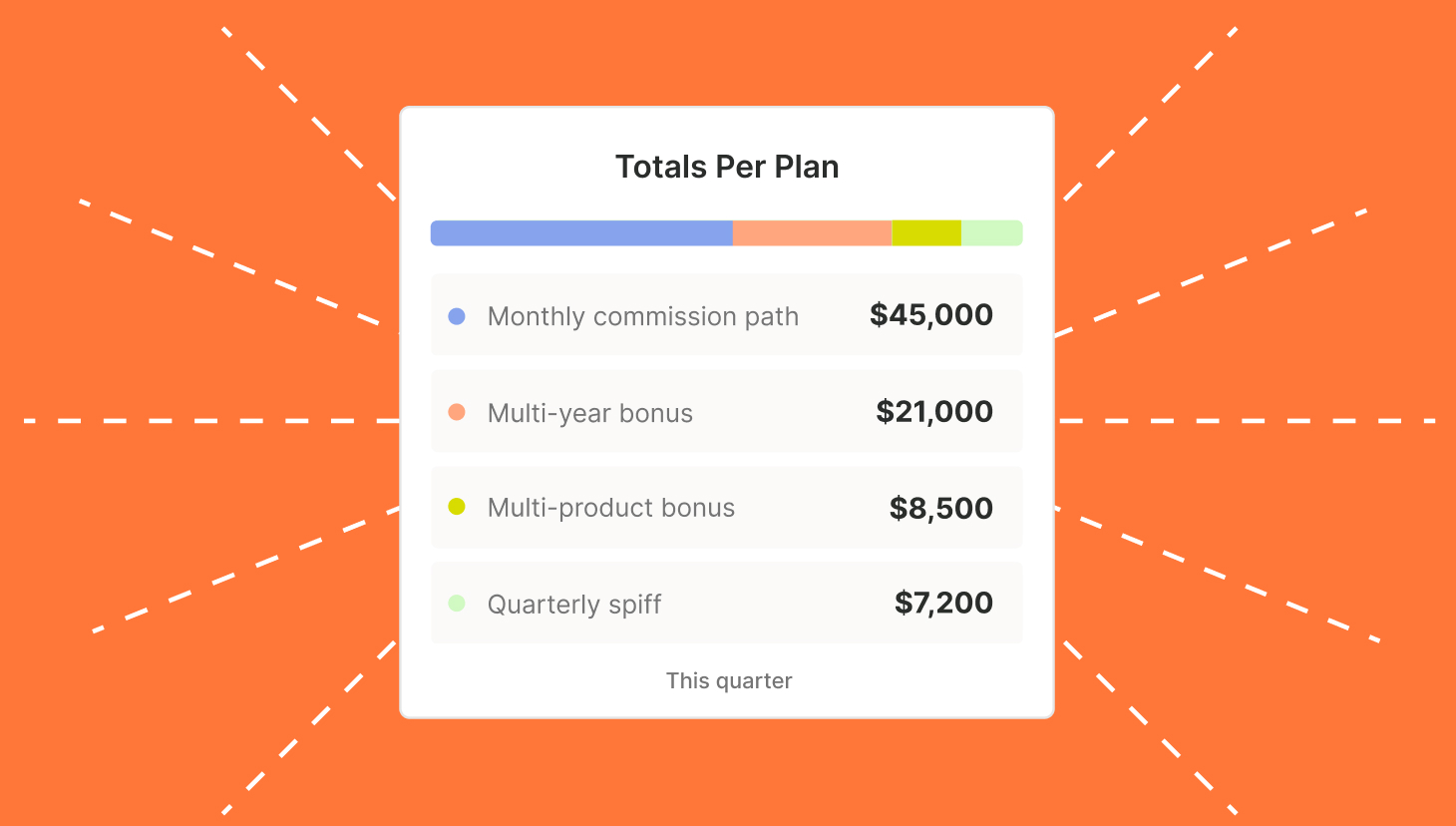Over the past 3 months, I’ve met with over 50 sales leaders helping them build, fix, or refresh their compensation plans. Some of these VPs of Sales need a complete overhaul of their variable compensation structure. Some have a nearly flawless plan. The vast majority of sales leaders are just looking for a sounding board to make sure they are on the right track. Sound like something that would be helpful for you, book your own call, no cost.
I thought I’d share a few insights I’ve gained from these calls. However, I want this blog to be slightly spooky, due to the season. I’ll be framing the most common things I hear as tricks (things to avoid) and treats (ways to build a good compensation plan). So strap on your spookiest mask and let’s get going!
Create Compensation Plans with confidence
RevOps, sales leaders, and finance teams use our free tool to ensure reps’ on-target earnings and quotas line up with industry standards. Customize plans with accelerators, bonuses, and more, by adjusting 9 variables.
Build a Comp PlanTrick: “I need to raise quota AND lower commission rates AND keep base salary static.”
Especially if new compensation plans are rolled out in conjunction with a new fiscal year, this topic comes up a lot. The management team has increased your financial target for the new year. You can’t hire a larger sales team to make your number, and you don’t have additional budget for more salary. You need to conduct research and set the salary amount for all your departments. New compensation plans should never be all bad, no good. That means you need to find a way to inject something positive for your sales reps, so they don’t feel spurned.
How can you inject some positivity into a tough compensation plan change? One way to do this is to reframe their quota or commission. If you have a monthly quota, change it to a quarterly quota. Try adding in an accelerator for those reps who over-perform. Increase paid time off. Expand your rep’s territory beyond a city to an entire state or region. Add in a recoverable draw to add some cash to their paychecks. Begin paying salespeople when the deal closes instead of when the client pays. Add in a bonus if they close a multi-year deal. Increase pricing to match your competitors’ price. Roll out an employer-funded mental health education program.
Treat: “How can I simplify my compensation plans?”
Music to my ears! Even without seeing their compensation plan, I (half-jokingly) tell most people they need to remove half of it. It’s very tempting to add in more components to compensation plans. Maybe you want to include a multi-year accelerator, a new logo bonus, or an activity requirement. Though each of these has merit in their own right, each time you add another part to a salesperson’s compensation plan, it adds complexity. With added complexity comes added confusion.
If you want to build a good commission plan, try to limit it to two or three components — we call them Paths. This will ensure everyone understands exactly how much they’re earning and why. If you’re reviewing an existing compensation plan and want to add a component, try removing one as well.
Trick: “The quota just feels right.”
Quotas should feel attainable and reasonable. Does that mean they feel right? Sure! However, quotas also need to be back by math, logic, and market standards. If your average contract value is $10,000 and the market average close rate is 10%, a $100,000 monthly quota isn’t realistic. That means your reps would have to run 100 demos to close 10 deals for $100k every month. I’ve had days when I run 5+ demos. I’m entirely drained by the end of it; I can’t imagine doing that every day of the month. On the flip side, say your average sales price is $50,000 and your demand is incredibly high. If your sales team closes 50 percent of their demos, a $100,000/month quota could be entirely too low!
There are several methodologies out there to help you figure out what a quota should be. Here’s my advice if you need a super simple option. Take your average contract value and multiply that by your average close rate. That gives you the value per demo. Multiply that by the number of demos a good rep should be able to run in a month. That gives you how much a good rep should be able to close in a month. If you have a quarterly quota, multiply that by three. As you scale and grow, you’ll have more data that should help you narrow in on a more accurate quota.
Treat: “I want sales incentive compensation to align with company goals.”
Great! Too often the company goals don’t align with the incentive pay offered to salespeople. Say, for example, a company is trying to reduce the amount of time it takes to collect the money owed to them by clients. If that’s a company goal, a smart sales leader might add in an extra incentive. If the rep gets net 30 terms instead of quarterly payments, they earn an extra 1% commission. Another example is the company is focused on closing as many new clients as they can with a contract value over $10,000 ARR. If that’s the case, the sales leader could create a $500 bonus for every contract over $10,000 that a sales rep closes.
If this is done well, you see everyone achieving their goals. However, if it’s done poorly, this can cause the opposite effect. Say your accounting team is focused on closing enterprise deals, but your marketing team is told that sales cycle is the most important metric. Your marketing team will provide smaller, quicker closing deals to your sales team. Your senior management team might praise your marketing team for their focus on revenue, but chastise your accounting team for failing. It might fall to the sales management team to identify this issue and help remedy it.
Trick: “Well, each rep has a different quota and variable compensation.”
Standardize your comp plans! Standardize your comp plans! I’ve written about this in the past. Employees bargaining for their compensation can lead to very nasty results. When every employee has a different commission rate because of their negotiation, employers tend to underpay women and people of color. “Not my company!” I can hear you yelling at me. I’m sure you’re very careful that all your employees are treated the same regardless of gender and race. However, the numbers don’t lie. It’s not done with malicious intent, but it happens.
Secondly, this causes additional confusion and effort for whoever has to calculate your commissions, though I know a tool that can help with that. Finally, with standardized compensation plans, you can articulate the career path well and your employees can focus on
This doesn’t mean that every single person has to have the same exact comp plan. Someone with a much larger territory might have a much larger quota and therefore a higher OTE. That’s normal and perfectly acceptable. What you do need to be aware of is when two employees have the same sized territory or quota but very different earning potentials.
Streamline commissions for your RevOps, Finance, and Sales teams
Design, track, and manage variable incentives with QuotaPath. Give your RevOps, finance, and sales teams transparency into sales compensation.
Talk to SalesTreat: “I want more transparency for my reps.”
I hear this pretty frequently, but I wish I heard it in 100 percent of my compensation plan consultation calls. If your employees don’t know how they’re paid, they won’t do the actions you’re hoping to pay them for. I’ve had conversations with people who said they were hoping to close more 2 and 3-year contracts. I asked them if they paid more for closing those deals — they do. I did a quick survey of their salespeople. Survey says: the salespeople didn’t realize it! If you think your comp plan is clear for your employees, do your own quick survey. Ask your team to describe their plan to you. If it’s not entirely correct, you need to add more transparency to the process. You should clearly lay out the different ways they get paid in one document for them to review. Most organizations have their sales reps sign this document, so they know everyone’s on the same page.
Also, sales reps should have real-time access to their commissions earned and the commissions they could earn from pipeline deals. That’s where QuotaPath comes in! QuotaPath is more than just a sales commission calculator, it helps reps track their quota attainment, set personal goals, and more! Sound like something you’re interested in? Book a demo with our team or create your own account for free.



